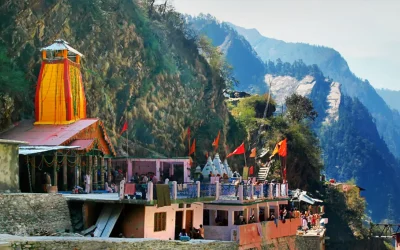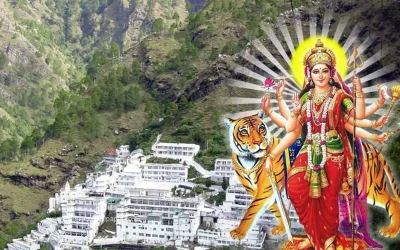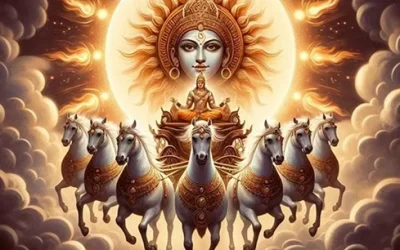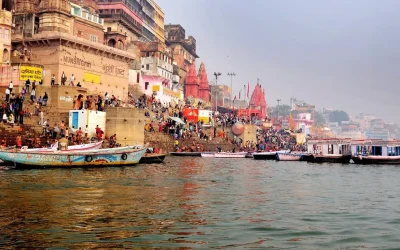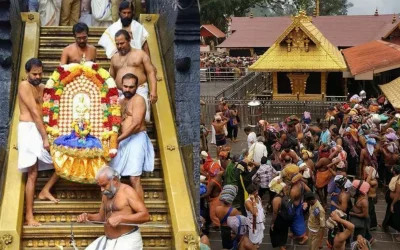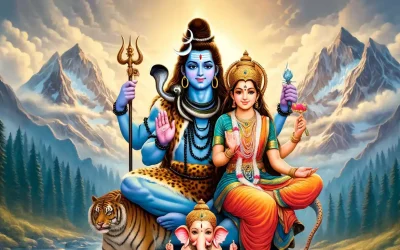Exploring the Magnificence of India: A Journey Through History and Heritage
India, a land steeped in history, culture, and architectural wonders, beckons travellers from across the globe to embark on a journey of discovery and enlightenment. Among the countless treasures that adorn this vast and diverse landscape, one stands out as a timeless testament to India’s rich cultural heritage and artistic brilliance—the Brihadishvara Temple in Thanjavur, Tamil Nadu.
Nestled on the south bank of the Cauvery River, the Brihadishvara Temple, also known as Rajarajesvaram, Thanjai Periya Kovil, or Peruvudaiyar Kovil, stands as a shining beacon of the Chola period’s architectural prowess. Built nearly a millennium ago by the visionary ruler Raja Raja Chozhan I, between 1003 and 1010 A.D., this magnificent temple is a marvel of Dravidian-style architecture, renowned for its intricate design and grandeur.
The temple’s most striking feature is its towering Gopuram, soaring to an impressive height of 216 feet. Atop this monumental structure sits the majestic Kumbam, a massive stone carved from a single rock weighing approximately 81 tons. What is truly remarkable about this feat of engineering is that it was accomplished without the aid of modern machinery or technology, showcasing the ingenuity and skill of ancient craftsmen.
Adjacent to the temple stands a magnificent Nandi sculpture, sculpted from a single stone and standing 13 feet tall. This awe-inspiring representation of the sacred bull is a testament to the craftsmanship and devotion of the artisans who created it.
However, not just the temple’s exterior captivates visitors; within its hallowed halls lie treasures beyond compare. Among them are the famed musical pillars, numbering 56 in total. Each of the eight main pillars is surrounded by seven smaller pillars, each producing a unique musical note when struck. This architectural marvel has puzzled scholars and musicians for centuries, inspiring awe and wonder in all who experience it.
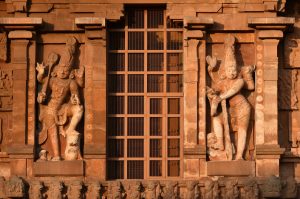
But the Brihadishvara Temple is more than just a magnificent architectural achievement; it is also a repository of history and culture. Its inscriptions and frescoes tell the tale of Thanjavur’s rise and fall, offering a glimpse into the city’s storied past. Once hailed as the Rice Bowl of Tamil Nadu, Thanjavur was a thriving center of culture and commerce during the ancient Chola civilization, its fortunes intertwined with those of the temple itself.
One of the most enduring legacies of Thanjavur’s rich cultural heritage is the art of Tanjore painting. Originating from southern India, this distinctive style of painting features extravagant depictions of deities adorned with vibrant colours and gold foil embellishments. Inspired by the temple’s grandeur and the city’s rich history, Tanjore’s painting continues to captivate artists and enthusiasts alike, serving as a testament to India’s artistic legacy.
Recognized as a UNESCO World Heritage Site, the Brihadishvara Temple symbolizes India’s rich cultural heritage and architectural brilliance. Despite enduring natural calamities and the passage of a thousand years, it remains a testament to the resilience and endurance of the human spirit, inspiring wonder and awe in all who behold it.
In conclusion, a visit to the Brihadishvara Temple in Thanjavur is not just a journey through history; it is an immersion into the soul of India itself. As travellers and seekers of wonder, let us heed the call to explore the splendour and majesty of this ancient land, where tradition and heritage converge in perfect harmony.
With its vast expanse and rich tapestry of cultures, India has always been a land of wonders, where history whispers through the winds and ancient stones tell stories of bygone eras. Few can rival the grandeur and majesty of the Brihadishvara Temple in Thanjavur, Tamil Nadu, among the myriad marvels that adorn this mystical land. Built nearly a millennium ago by the illustrious Chola emperor Raja Raja Chozhan I, this architectural masterpiece stands as a testament to its creators’ ingenuity, skill, and devotion.
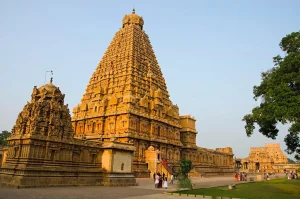
As one approaches the temple, its towering Gopuram dominates the skyline, reaching towards the heavens in a testament to human ambition and spiritual yearning. Rising to a height of 216 feet, the Gopuram serves as a gateway to the divine, inviting pilgrims and visitors alike to embark on a journey of discovery and enlightenment. Atop this monumental structure sits the Kumbam, a massive stone carved from a single rock weighing approximately 81 tons. The sheer magnitude of this feat is staggering, especially when one considers that it was accomplished without modern machinery or technology. Indeed, the construction of the Brihadishvara Temple is a testament to the skill, dedication, and craftsmanship of its builders, who toiled tirelessly to bring their vision to life.
As one enters the temple complex, one is greeted by a magnificent Nandi sculpture carved from a single stone and standing 13 feet tall. This sacred bull, the mount of Lord Shiva, serves as a guardian and protector of the temple, its watchful gaze a reminder of the divine presence that permeates these hallowed grounds.
But perhaps the most awe-inspiring feature of the Brihadishvara Temple is its famed musical pillars, which have captivated visitors for centuries with their enchanting melodies. Comprising 56 pillars, each producing a unique musical note when struck, these architectural wonders are a testament to the temple’s builders’ advanced engineering and acoustic principles. As one wanders through the temple halls, they are treated to a symphony of sound as the pillars’ melodic tones reverberate through the air, filling the space with a sense of transcendent beauty and harmony.
Yet, the Brihadishvara Temple is more than just a marvel of architecture and engineering; it is also a repository of history, culture, and spiritual wisdom. Its walls are adorned with exquisite frescoes and inscriptions, which tell the tale of Thanjavur’s illustrious past and the enduring legacy of the Chola dynasty. Once a thriving center of commerce and culture, Thanjavur was known as the Rice Bowl of Tamil Nadu, its prosperity fueled by the fertile lands nourished by the waters of the Cauvery River.
However, perhaps the most enduring legacy of Thanjavur’s rich cultural heritage is the art of Tanjore painting, which originated in this region centuries ago. Characterized by its vibrant colours, intricate details, and use of gold foil embellishments, Tanjore painting is a testament to the artistic genius of the people of Thanjavur, who sought to capture the beauty and splendour of the divine in their works of art. Today, Tanjore painting continues to thrive as a cherished tradition, inspiring artists and enthusiasts worldwide with its timeless beauty and spiritual depth.
Recognized as a UNESCO World Heritage Site, the Brihadishvara Temple is a testament to India’s rich cultural heritage and architectural brilliance. Despite the passage of centuries and the ravages of time, it remains a beacon of hope and inspiration, reminding us of human creativity’s enduring power and the divine’s transcendent beauty. As one stands in awe before its majestic splendour, one cannot help but feel a sense of wonder and reverence for the countless generations of people its divine presence has touched.
In conclusion, a visit to the Brihadishvara Temple in Thanjavur is not just a journey through history; it is a pilgrimage to the very heart and soul of India itself. As travellers and seekers of truth, let us heed the call to explore the wonders of this ancient land, where the past and present converge in a timeless dance of beauty and grace. For in the shadow of its towering spires and within the echo of its melodic pillars, we find a glimpse of India’s glorious past and a vision of its radiant future.

